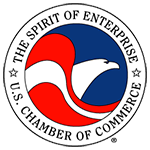CFPB Launches Inquiry into Overdraft Practices
CFPB Launches Inquiry into Overdraft Practices
Bureau Explores Ways to Help Consumers Avoid Overdraft Penalty Fees
WASHINGTON, D.C. – Today, the Consumer Financial Protection Bureau (CFPB) launched an inquiry into checking account overdraft programs to determine how these practices are impacting consumers. As part of that inquiry, the CFPB is seeking public input on a prototype “penalty fee box” – a disclosure on a consumer’s checking account statement that would highlight the amount overdrawn and total overdraft fees charged.
The prototype penalty fee box is available here.
“With today’s technologies, consumers have more opportunities to access their checking accounts and cause overdrafts,” said CFPB Director Richard Cordray. “But overdraft practices have the capacity to inflict serious economic harm on the people who can least afford it. We want to learn how consumers are affected, and how well they are able to anticipate and avoid paying penalty fees.”
An overdraft occurs when a consumer spends or withdraws more money than is available in his or her checking account and the financial institution advances funds on the consumer’s behalf. Banks generally charge an overdraft fee for each transaction that they choose to cover. For point-of-sale debit card and ATM transactions, regulations by the Federal Reserve Board that became effective in 2010 prohibit a bank from charging the overdraft fee unless the consumer has opted-in. For check and online bill payments, as well as recurring debits, banks can charge an overdraft fee without any affirmative request from the consumer.
According to various industry sources, the average overdraft fee ranged from $30-$35 in 2011 and has increased by 17 percent over the past five years. A study by the Federal Deposit Insurance Corporation published in 2008 found that consumers who overdrew 20 or more times per year paid an average of $1,610 in overdraft fees annually.
The inquiry the CFPB is launching today — through a data request that is being sent to a number of banks and a Notice and Request for Information from the public — will provide insight into overdraft practices. The inquiry is focused on four main areas:
- Transaction Re-ordering that Increases Consumer Costs: The CFPB is concerned that overdraft practices employed by some financial institutions increase consumer costs. One such practice is commingling of all checks, bill payments, debit card transactions, and ATM withdrawals each day and processing the largest transactions first. This maximizes the number of transactions that will trigger an overdraft fee. The CFPB will examine how prevalent this practice is and how it impacts consumers.
- Missing or Confusing Information: The CFPB is exploring whether consumers can anticipate and avoid overdraft fees. The CFPB will examine how clearly overdraft terms are disclosed and the extent to which consumers are made aware of, qualify for, and take advantage of, alternative means of covering overdraft transactions.
- Misleading Marketing Materials: The Bureau is looking into reports that consumers are receiving misleading marketing materials about overdrafts. Initial data suggests that opt-in rates differ widely among institutions. The CFPB seeks to understand how differences in the way institutions explain and promote overdraft programs may affect opt-in rates.
- Disproportionate Impact on Low-Income and Young Consumers: The Bureau is revisiting the 2008 FDIC study that found that 9 percent of checking account customers bear about 84 percent of overdraft fees. Evidence suggests that overdraft programs disproportionately impact low-income and young consumers. According to this study, 46.4 percent of young adult accountholders incurred overdraft fees, and of those, 15 percent recorded more than ten overdrafts in one year.
The CFPB is also working to make it easier for consumers to understand the costs and risks of overdraft programs. The Bureau is seeking public feedback on a prototype “penalty fee box” that would appear prominently on the checking account statements of consumers who overdraw their accounts. This prototype details how much was overdrawn and what fees were incurred so that consumers can clearly see how much overdrafts are costing them.
To educate consumers about the opt-in overdraft rules, the CFPB is launching a “What’s your overdraft status?” campaign. The goal is to encourage consumers to know whether or not they have opted in to overdraft fees on ATM and point-of-sale transactions, and understand their options for avoiding penalty fees.
The CFPB’s inquiry builds on actions taken by other federal banking regulators. In February 2005, the FDIC, Office of the Comptroller of the Currency, National Credit Union Administration, and Federal Reserve Board issued supervisory guidance that suggested best practices for overdraft programs. Many of these best practices have not been consistently adopted. The FDIC issued additional guidance that applies only to FDIC-regulated institutions and the OCC and OTS issued proposed guidance in 2011 and 2010, respectively. The opt-in rules for overdrafts issued by the Federal Reserve Board took effect in July 2010 and transferred to the CFPB in July 2011.
The CFPB will use the input collected through the inquiry to assist with policymaking on overdraft practices and prioritize its own regulatory and education work. In addition to the inquiry, the Bureau will collect data from several of the largest banks in the country to evaluate how those institutions’ overdraft policies affect consumers.
Source: consumerfinance.gov

